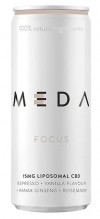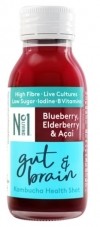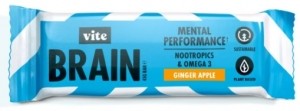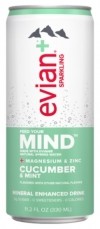Placebo packaging? Designing products with perceived potency

Sam Hammond, sensory qual senior researcher at MMR gave a presentation as part of the research firm's functional foods virtual event last Wednesday (October 20). He explained that the 'sensory qual' team identifies all the areas of the consumer’s sensory experience – appearance and pack, ingredients and textures, and flavour aftertaste and feel - and works out how to increase the perception of health efficacy throughout the consumption journey.
“It’s important to cue the functional benefit of your product through all stages of the brand pack and product sensory journey,” he said.
Health at first sight?
He explained product packaging is the first impression for many consumers, making it essential for increasing impulse purchases but also an important element of the overall feeling of efficacy for the consumer.
Providing an example of a product well packed to communicate health value, Hammond discussed the nootropic cold coffee beverage Meda Focus.
“What really makes this product stand out is the clinical appearance with the clean white background and black lettering which can support the perception of efficacy.
“It also claims specific amounts of functional ingredients which is seen as more clinical with the expectation that the right amount of ingredient has been added to support its intended function.
A very different approach to communicating efficacy, but still effective, Hammond discuss the No.1 Living No.1 'gut and brain' kombucha shot. He explained there is a clear link made in the consumer’s mind between the brightness of the product and the potency of the functional ingredients.
“This is a good example of being really simple and clean and communicating the functions of the product right off the bat.”
“White and blue colouring on pack is reminiscent of medicine queuing consumer to the function. The colours on the label as well as the colour of the liquid are bright - this combined with the clinical feel from the glass bottle and prominent ingredients listed on front of pack help drive expectations of a quick and effective delivery of intense flavour and functionality.”
Heroic ingredients
According to MMR data, there are a large range of ingredients which already enjoy familiarity, such as vitamins, minerals, and caffeine, and, thanks to their familiarity they also have a high perception of efficacy already. So brands will often use these on top of lesser known ingredients in order to create that trust.
Likewise, minerals such as magnesium and zinc and the fatty acid omega-3 have a well-established perceived connection to brain function as they are ingredients that have been around for a long time and have a lot of scientific backing.
While there is currently less familiarity in less well-known ingredients, such as Lion’s Mane mushrooms, Rhodiola Rosea and Ginko Biloba, Hammond said consumers are seeking out knowledge of these ingredients and they are becoming more common which will increase perceptions of efficacy.
For example, according to MMR data, L-Theanine has seen a strong surge in belief in its efficacy over the last couple of years as it is used more regularly.
Hammond added: "As nootropics become more common and better understood, consumers are seeing these called out on packaging as hero ingredients and linked to claims more frequently."
He used the example of the Vite 'Brain Bar' - a ginger and apple flavour bar containing Alpha GPC, Rhodiola Rosea, Lions Mane Mushroom, Bacopa Monnieri, Flaxseed Powder, Caffeine, L-Theanine, and Pantothenic Acid (Vitamin B5) - 'funky ingredients' which are slowly becoming more commonly known in the mainstream.
“It boasts on the front a common functional ingredient 'omega-3', giving consumers an indication as to what benefit they can expect to receive from the product, based on the common knowledge that omega-3 is good for the brain.”
Proof is in the eating
Discussing this bar further, Hammond pointed out that texture during consumption can provide functional cues and impact whether the consumer feels the product is having an impact.
“What really stands out in this bar is the texture," he said. "It has a dense texture combined with the right level of moisture which delivers a long chew to give an experience to focus on, suggesting it is delivering the benefits promised.”
The bar also has whole ingredients that you can see within the bar, such as the seeds and apple pieces, giving the impression of the bar being more nutritious and packed with goodness.
The combination of this 'long chew' alongside the visible nutrition both set the product up well for a positive consumer experience.
The only aspect Hammond said this product could further bolster the perception of efficacy would be through the flavour.
“The ginger and apple flavour is quite appealing but it leaves something to be desired in terms of communicating the delivery of those nootropic ingredients. We feel it could deliver a stronger flavour potentially with an acidity kick to give a burst of flavour that brings you into that moment and helps with that focus.”
To further exemplify how mouthfeel can impact the perception of efficacy, Hammond discussed the Evian+ Mind carbonated beverage.
"The medium intensity carbonation triggers immediate focus, the thin mouthfeel suggests quick absorption of functional ingredients and the after tingle leads to a cooling sensation to deliver a calm, cooled, collected focus."
Providing this feeling of immediate benefit via mouthfeel is particularly important when dealing with ingredients which aren't necessarily going to provide an immediate noticeable benefit to the consumer, Hammond explained.
“As nootropics are known to take time to take effect it’s important to provide a sensory experience signalling that the product is working.
“This placebo style effect does not need to come from the nootropic ingredients themselves and can come from other ingredients. Providing a placebo effect is not to say that we’re trying to trick consumers, it’s about packaging this product as a whole and delivering believable efficacy because these ingredients do take time and continued usage to show their benefits.”
He said, according to MMR's research, there were no functional food product that ticked all the boxes in terms of the packaging, ingredients, and taste and aftertaste.
“And that really leaves the door open for big players in this category to come in and shape what functional products are going to look like.
“We feel like the category is waiting for a big player to come in and make the rules on what’s going to work in this space.”









